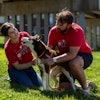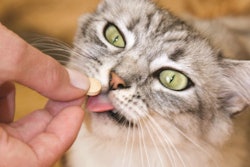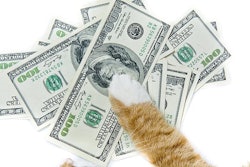
As I write this, National Dog Day in the U.S.—August 26 in 2022—is upon us. (For people like me who share their lives with cats, we can look forward to National Cat Day on October 29.)
Are these actual holidays? Well, no. They seem to be part of a trend for various organizations and interest groups to claim a particular day of the year to celebrate and focus on their chosen or favorite animal/thing/cause/occurrence. In fact, there are websites that list all the international celebrations for each day in a year, whether official holidays for their particular nations or just fun interests or obsessions.
(I know this because during the initial months of the pandemic, our adult daughter, who was locking down with us, bookmarked such a site and announced each day’s celebration[s], mostly out of sheer boredom. Also out of boredom, on some days we actually did something to join in the designated celebrations in our own way.)
Still, color me skeptical about these celebrations. For one thing, if every single day has a special celebration, are they all truly special? I guess each is to a certain group of people.
More specifically, in the case of National Dog Day and National Cat Day, I can’t help but question their need. After all, don’t we pet owners celebrate and cherish our beloved dogs and cats every day?
Despite my skepticism, celebrations like National Dog Day and National Cat Day can serve a purpose for pet food brands and other pet product companies: They provide a great marketing hook to engage your customers. For example, they’re ready-made for social media campaigns inviting pet owners to share their special dogs’ or cats’ photos and experiences with their beloved furry family members.
Pet food demand insights via Amazon searches?
Whether these celebrations truly affect consumer behavior is another matter. Pattern, a self-described global e-commerce accelerator, tracked search data on Amazon.com to see if dog food demand peaked leading up to National Dog Day (and also for National Cat Day in 2021). I find their charts and analysis inconclusive, even a stretch of the imagination, but it’s always interesting to see consumer behavior on the ultimate consumer e-commerce platform.
Looking at daily search queries on Amazon for “dog food” from January 2020 through July 2022, Pattern showed certain, well, patterns. “Most notably, consumer demand for dog food peaks annually in January, with January 2022 seeing a 79% increase in demand compared to December 2021,” said a Pattern Data Science blog post.
The post went on to point out that dog food demand (as measured by search queries) also peaks in summer around August; the writer(s) speculated that could be related to National Dog Day. Or, in my mind, it could be a normal demand peak, following one in April; it stands to reason that dog owners replenish their dog food supplies every few months. (That pattern didn’t appear in 2020, but of course, nothing was normal about 2020.)
Dog treat purchases and searches followed roughly the same pattern as for dog food, the Pattern charts showed. As did cat food. Pattern tried to make the case with its charts that dog food demand peaked more than cat food demand leading up to National Cat Day in 2021, but the timing seems to follow the replenishment pattern of the rest of the year.
Bottom line, I don’t buy Pattern’s conclusion: “Applying our National Dog Day trends to a broader scope, our data shows that non-traditional holidays and celebrations have a direct influence on Amazon shopping behavior.” To me, their data doesn’t show any sort of direct connection or affect. Yet that doesn’t mean there’s no usefulness to it. As the blog post alluded, pet food brands need to be able to forecast demand and plan accordingly.
And it certainly doesn’t hurt to use something like National Dog Day as a reason to create a new marketing or social media effort.
















